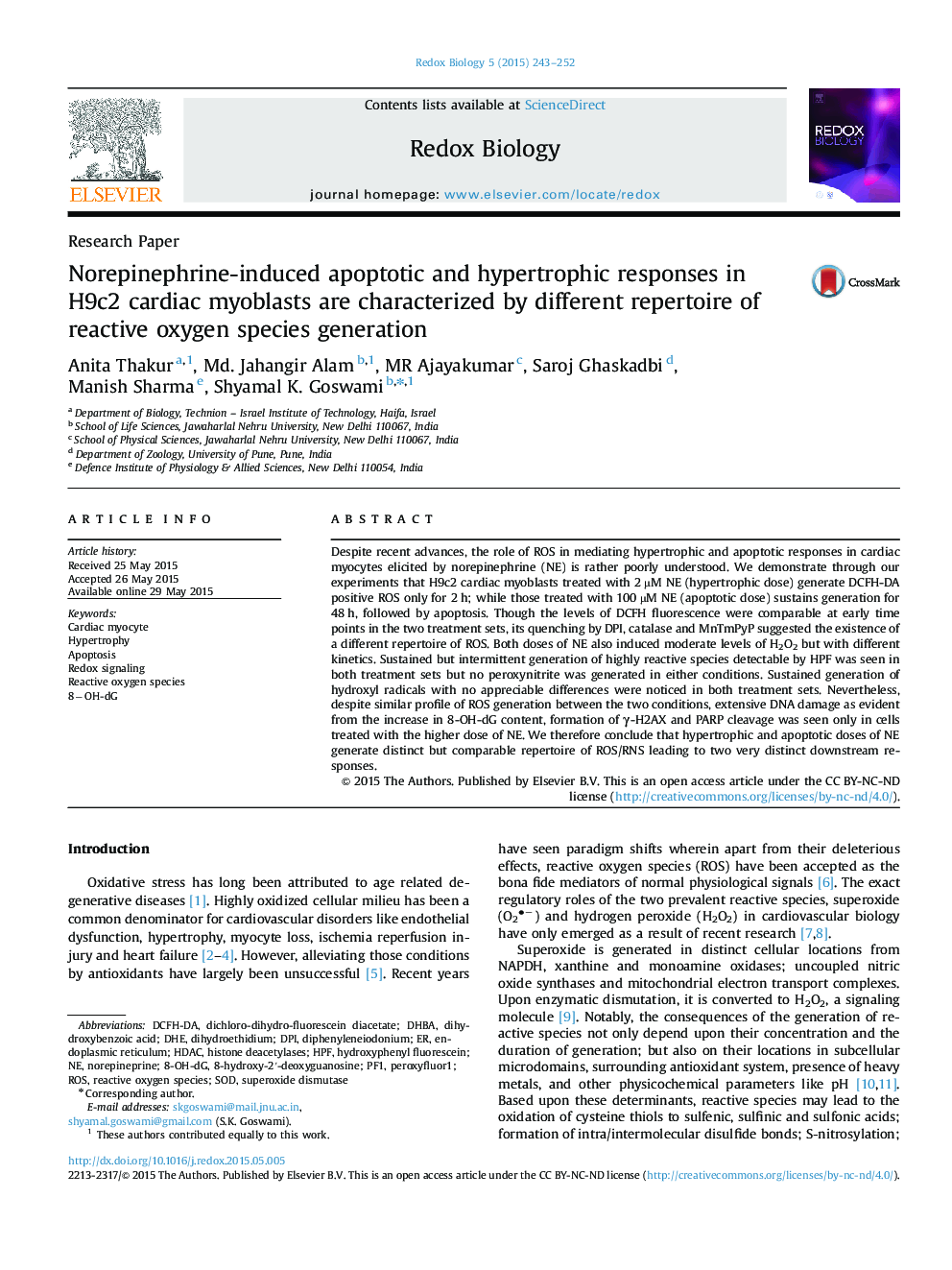| کد مقاله | کد نشریه | سال انتشار | مقاله انگلیسی | نسخه تمام متن |
|---|---|---|---|---|
| 1923160 | 1535845 | 2015 | 10 صفحه PDF | دانلود رایگان |

●H9c2 myoblasts upon treatment with 2 and 100 µM NE induces hypertrophy and apoptosis.●Both treatments show comparable levels of DCFH fluorescence with different kinetics.●Both treatments show comparable levels of HPF fluorescence in an oscillating manner.●More hydroxyl radical was generated in 100 µM NE treated set.●DNA damage and apoptosis occurs only in 100 µM NE treated sets.
Despite recent advances, the role of ROS in mediating hypertrophic and apoptotic responses in cardiac myocytes elicited by norepinephrine (NE) is rather poorly understood. We demonstrate through our experiments that H9c2 cardiac myoblasts treated with 2 µM NE (hypertrophic dose) generate DCFH-DA positive ROS only for 2 h; while those treated with 100 µM NE (apoptotic dose) sustains generation for 48 h, followed by apoptosis. Though the levels of DCFH fluorescence were comparable at early time points in the two treatment sets, its quenching by DPI, catalase and MnTmPyP suggested the existence of a different repertoire of ROS. Both doses of NE also induced moderate levels of H2O2 but with different kinetics. Sustained but intermittent generation of highly reactive species detectable by HPF was seen in both treatment sets but no peroxynitrite was generated in either conditions. Sustained generation of hydroxyl radicals with no appreciable differences were noticed in both treatment sets. Nevertheless, despite similar profile of ROS generation between the two conditions, extensive DNA damage as evident from the increase in 8-OH-dG content, formation of γ-H2AX and PARP cleavage was seen only in cells treated with the higher dose of NE. We therefore conclude that hypertrophic and apoptotic doses of NE generate distinct but comparable repertoire of ROS/RNS leading to two very distinct downstream responses.
Figure optionsDownload as PowerPoint slide
Journal: Redox Biology - Volume 5, August 2015, Pages 243–252